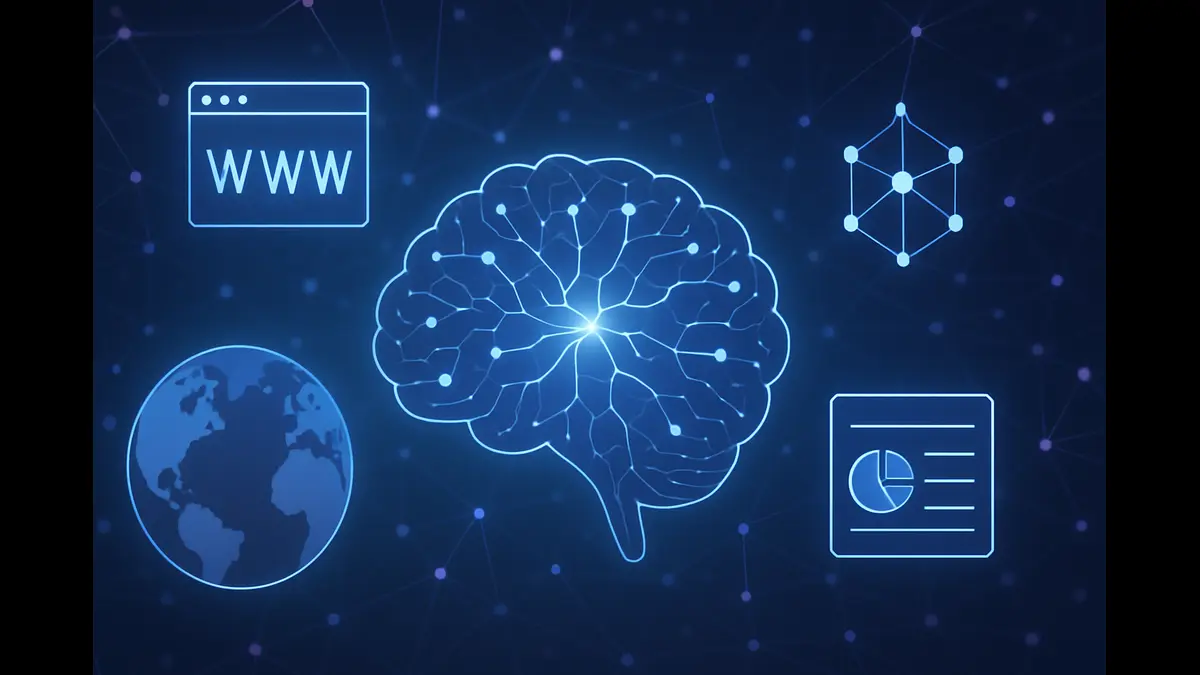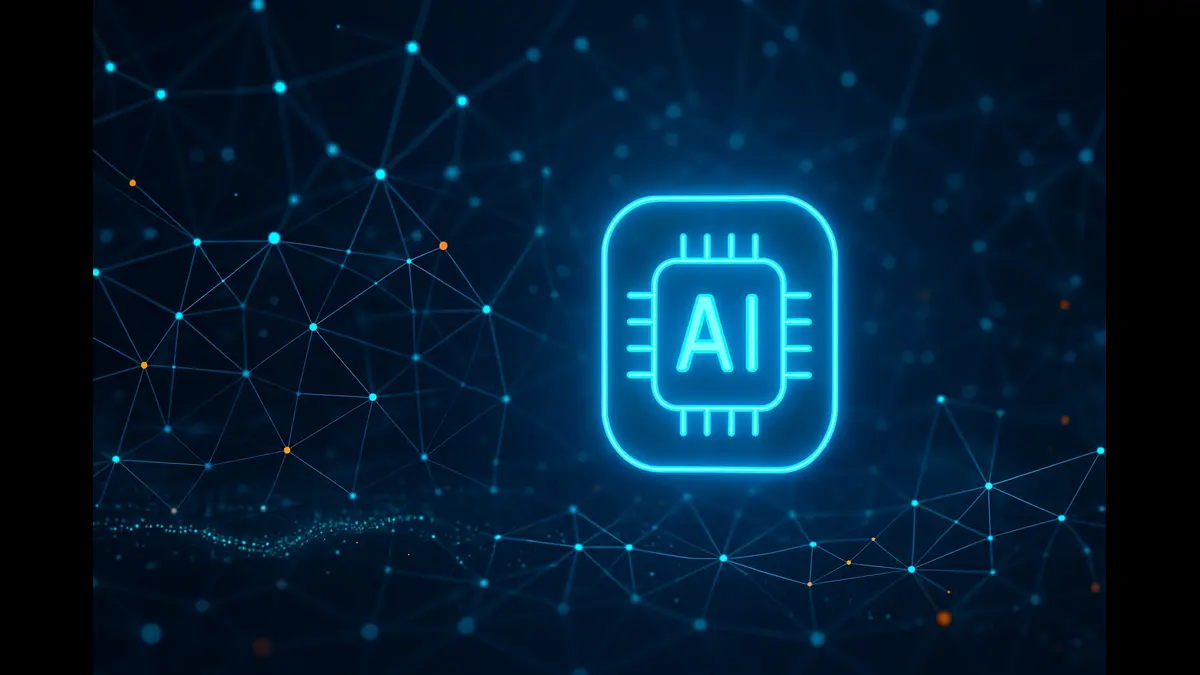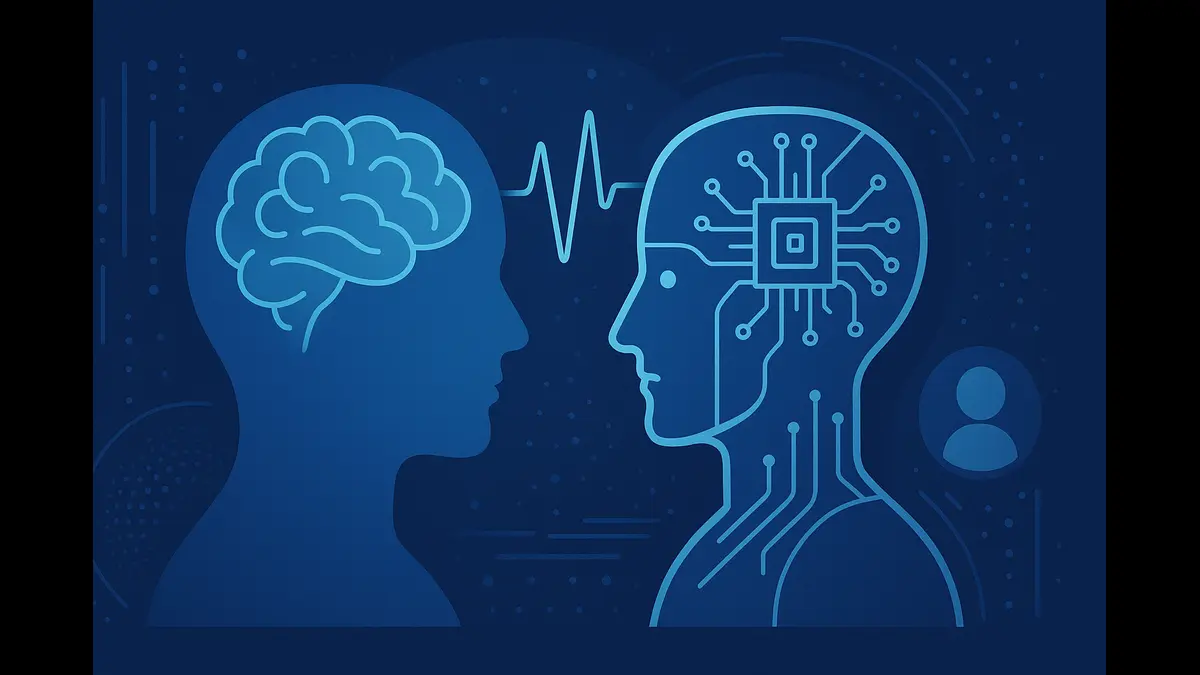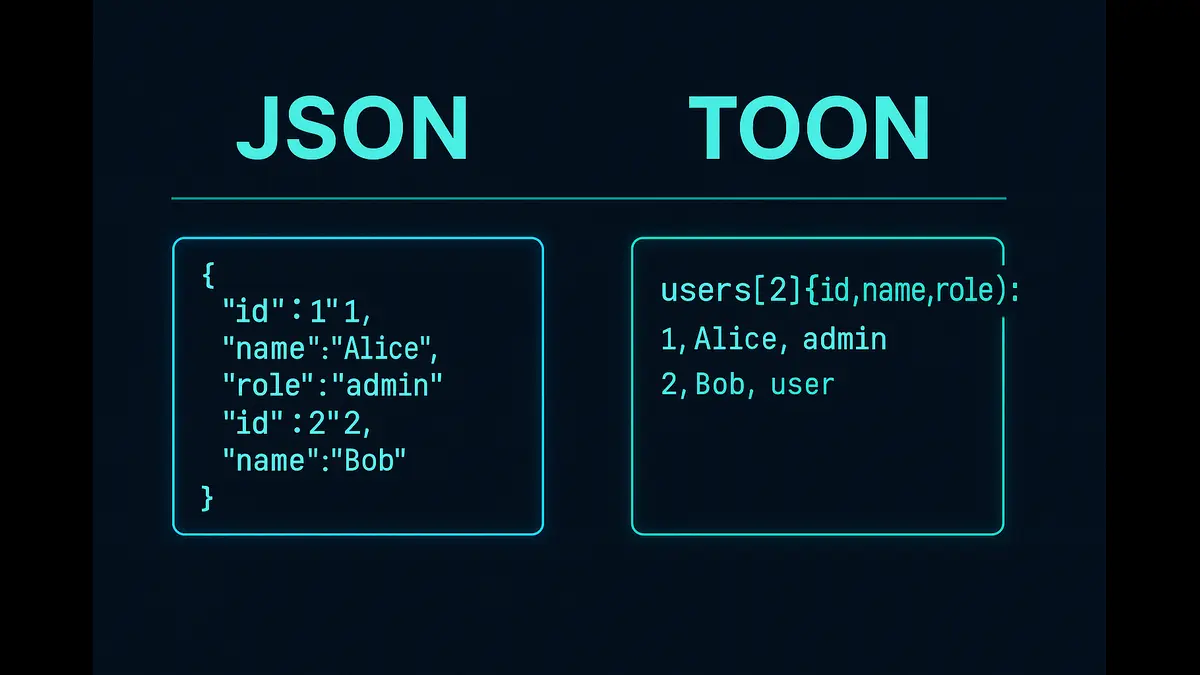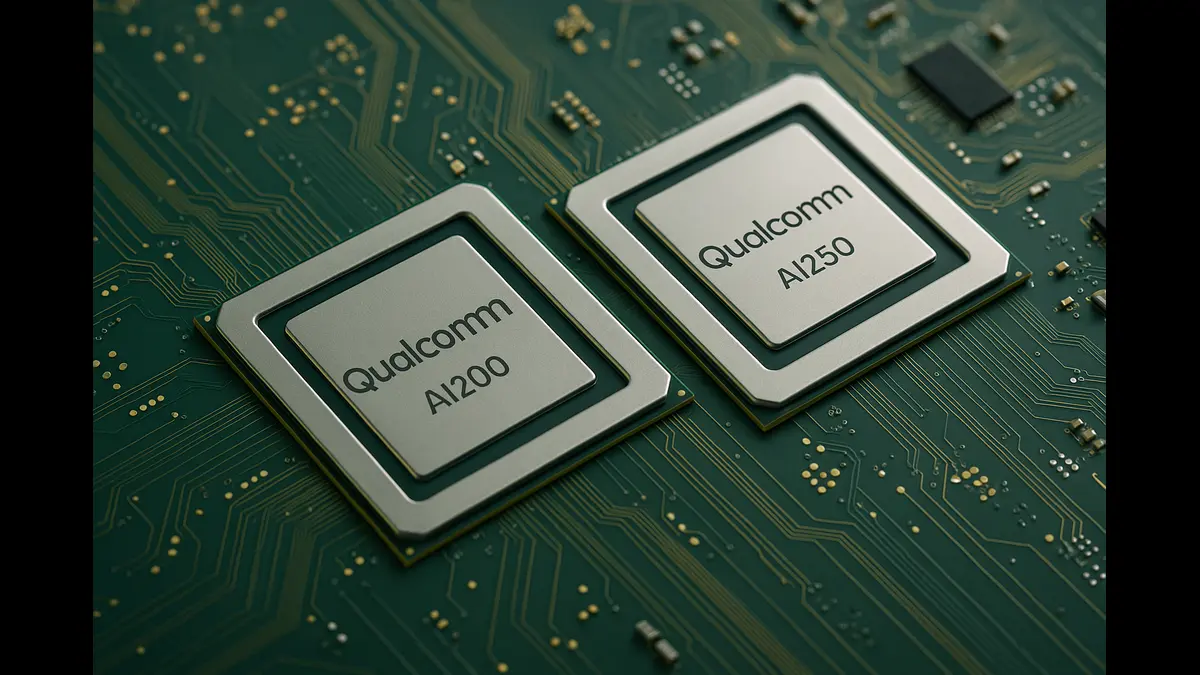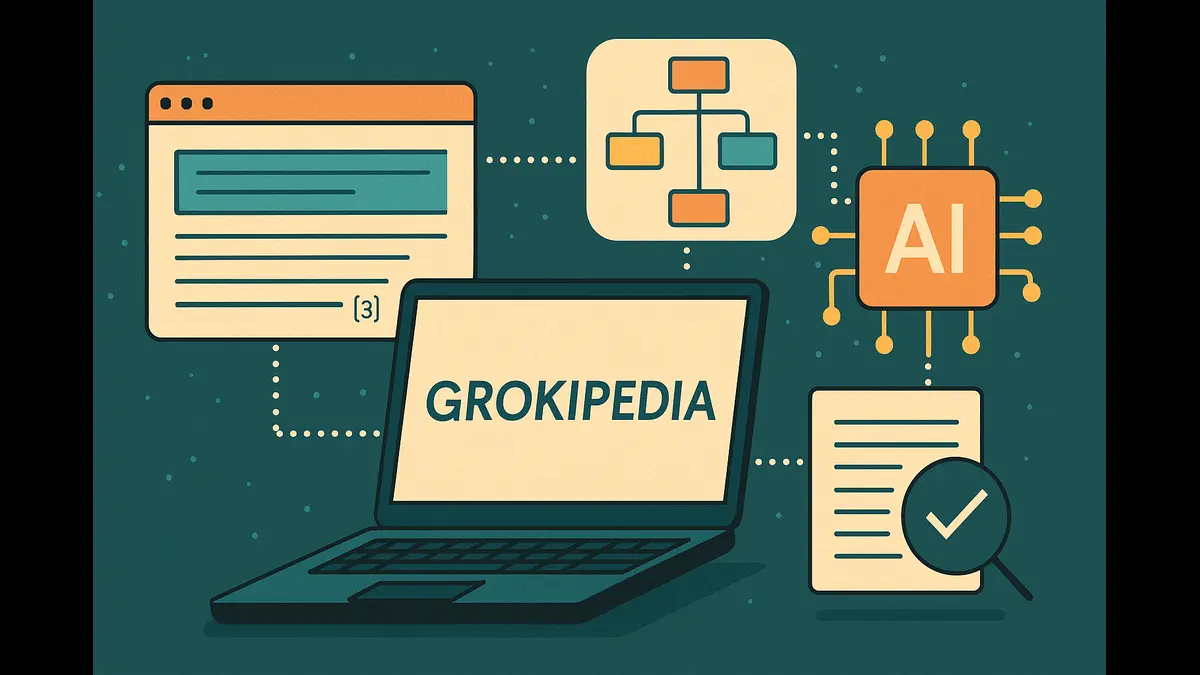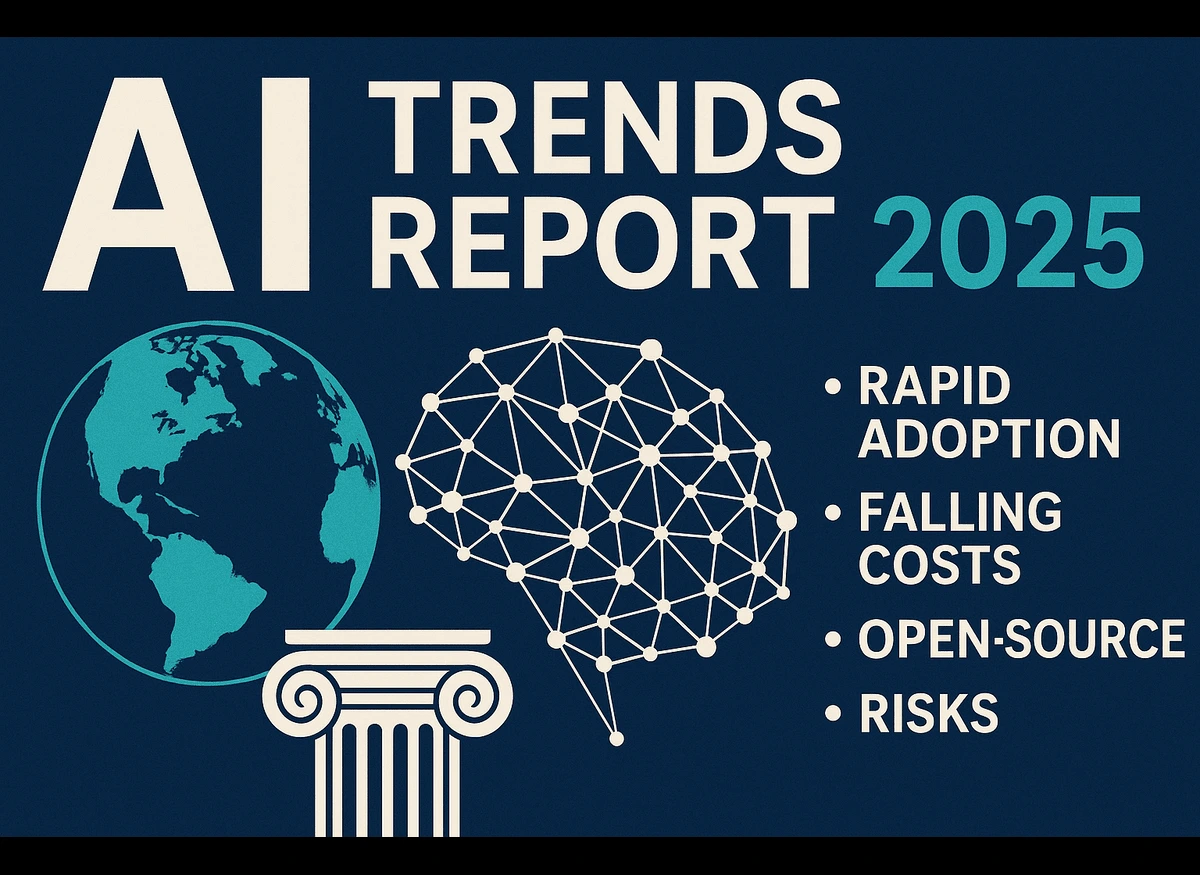
The BOND 2025 AI Trends Report highlights AI’s rapid adoption, falling inference costs, and open-source momentum. It explores U.S.-China AI dynamics, industry transformation, and risks like labor displacement, envisioning an AI-native economy by 2030 that redefines innovation and competition.
The dawn of artificial intelligence (AI) has ushered in a transformative era, reshaping industries, economies, and societies at a pace unmatched by any technological revolution in history. The BOND 2025 AI Trends Report, authored by Mary Meeker and published by BOND Capital in May 2025, offers a compelling 340-page exploration of this seismic shift.
Drawing exclusively from the insights of this seminal report, this article delves into the rapid adoption, technological advancements, global dynamics, and profound implications of AI as it redefines the modern world. With a lens on factual precision and engaging clarity, we unpack the report’s findings to illuminate the trajectory of AI and its far-reaching impact.
An Unprecedented Surge in AI Adoption
The BOND 2025 AI Trends Report underscores a singular truth: AI is advancing at a velocity that dwarfs the adoption curves of prior technological waves, such as the internet and mobile technology. A striking example is ChatGPT, which, since its launch in November 2022, amassed 800 million users in a mere 17 months—a feat that outpaces the growth of any preceding digital platform. This meteoric rise is not an isolated phenomenon but part of a broader trend of explosive user engagement.
Developers, too, are flocking to AI, particularly to open-source models like Meta’s Llama, which saw a 3.4× surge in downloads over just eight months. This unprecedented adoption signals a paradigm shift, where AI is not merely a tool but a foundational element of modern innovation.
The report attributes this rapid uptake to AI’s accessibility and versatility. Unlike earlier technologies that required specialized infrastructure, AI’s integration into everyday tools—spanning smartphones to enterprise systems—has democratized its use. From individual creators to multinational corporations, stakeholders across the spectrum are harnessing AI to solve problems, streamline operations, and unlock new opportunities. This surge in engagement is not a fleeting trend but a testament to AI’s potential to redefine how we interact with technology and each other.
The Economics of AI: Falling Costs, Rising Opportunities
A pivotal driver of AI’s proliferation is the dramatic decline in inference costs—the expense of querying a trained AI model. According to the report, these costs have plummeted from $20 per million tokens to a remarkable $0.07 per million tokens in less than a year. This steep reduction has unlocked new possibilities, enabling businesses to deploy AI at scale without prohibitive financial barriers. Simultaneously, the report notes that training costs for large language models (LLMs) remain high and are escalating, reflecting the immense computational resources required to build cutting-edge models.
To support this computational demand, capital expenditure on AI infrastructure—particularly data centers and graphics processing units (GPUs)—is soaring. Companies like NVIDIA are at the forefront, delivering hardware advancements that enhance performance and efficiency. These investments are not merely financial; they represent a strategic race to secure the computational backbone of the AI-driven future. The convergence of falling inference costs and robust infrastructure investment is fostering an ecosystem where AI applications can flourish, from small-scale startups to global tech giants.
The Rise of Open-Source AI: Democratizing Innovation
One of the report’s most compelling insights is the momentum behind open-source AI models, which are reshaping the competitive landscape. Given the frequent emphasis on open-source throughout the report, it’s clear that models like Meta’s Llama are emerging not just as alternatives, but as formidable competitors to proprietary systems. These open-source frameworks empower a diverse array of developers to innovate, reducing reliance on closed ecosystems controlled by a few tech behemoths. This democratization is fostering a vibrant, distributed AI ecosystem where creativity and collaboration thrive.
The implications of open-source AI are profound. By lowering barriers to entry, these models enable smaller organizations and individual developers to experiment and build applications that rival those of industry leaders. The report highlights how this shift is accelerating innovation, as developers leverage open-source tools to create solutions tailored to specific industries and cultural contexts. This trend is not only technical but philosophical, promoting a vision of AI as a shared resource that drives collective progress.
The Global AI Race: U.S. and China in Focus
The BOND 2025 AI Trends Report offers a nuanced comparison of AI development in the United States and China, two global powerhouses shaping the AI landscape. In the U.S., innovation is driven by a robust private sector, with companies investing heavily in research and development. However, the report highlights China’s rapid ascent, exemplified by firms like DeepSeek, which claims to have trained a competitive LLM for just $6 million—a fraction of the cost of Western counterparts. China’s advantages include a vast population, government-backed initiatives, and a skilled workforce, which collectively fuel its AI ambitions.
Yet, China faces challenges, including stringent regulations and data privacy concerns that could hinder its progress. The report notes that these dynamics create a complex interplay, where both nations are vying for AI supremacy while navigating distinct hurdles. This global competition is not merely technological but geopolitical, as AI becomes a cornerstone of economic and strategic influence. The contrasting approaches—market-driven in the U.S. and state-supported in China—underscore the multifaceted nature of the AI race.
Transforming Industries, Redefining Economies
AI’s impact extends far beyond technology, reshaping industries such as healthcare, finance, and retail. The report cites transformative applications, from AI-driven drug discovery that accelerates medical breakthroughs to language translation systems that bridge global communication gaps. In retail, AI enhances customer experiences through personalized recommendations and streamlined operations, while in finance, it powers fraud detection and risk assessment. These advancements are not incremental but revolutionary, redefining how industries operate and compete.
The decline in inference costs and breakthroughs in hardware efficiency are enabling new business models. Startups can now leverage AI to challenge established players, while large corporations integrate AI to optimize processes and gain competitive edges. The report emphasizes that this transformation is not limited to high-tech sectors; AI’s versatility ensures its influence across virtually every industry, from agriculture to education. As AI becomes more embedded, it is poised to redefine economic structures, creating opportunities for those who adapt and challenges for those who lag behind.
Navigating Risks in an AI-Driven World
While AI’s potential is immense, the report candidly addresses its risks. Among the most pressing concerns are AI weaponization, surveillance misuse, and labor displacement. A striking statistic reveals that 73% of users in a study mistook AI-generated responses for human ones, highlighting issues of trust and authenticity. These risks are not hypothetical; they demand urgent attention to ensure AI’s benefits are not overshadowed by unintended consequences.
The report advocates for responsible AI development, emphasizing the need for robust governance frameworks. As AI becomes more integrated into daily life, questions of ethics, privacy, and accountability grow more pressing. Labor displacement, in particular, poses a societal challenge, as AI automates tasks traditionally performed by humans. Yet, the report also sees opportunity in this disruption, suggesting that AI can augment human capabilities, creating new roles and industries if managed thoughtfully.
The Future: An AI-Native Economy
Looking ahead, the BOND 2025 AI Trends Report envisions a future where AI becomes the default interface for knowledge. By 2030, AI is expected to supplant humans in tasks such as writing, coding, summarizing, coaching, and decision-making, leveraging contextual and ambient intelligence. This shift heralds the emergence of an “AI-native economy,” where intelligence is a standard feature of software, and the marginal cost of intelligence approaches zero.
This future is not distant but imminent. The report predicts that firms addressing intelligence bottlenecks—whether through innovative algorithms, efficient hardware, or novel applications—will gain significant competitive advantages. As AI becomes ubiquitous, it will redefine how businesses operate, how governments function, and how individuals interact with technology. This transformation demands strategic agility, as stakeholders must navigate a landscape where intelligence is no longer a luxury but a necessity.
The BOND 2025 AI Trends Report is more than a snapshot of AI’s current state; it is a roadmap for understanding its trajectory. With unprecedented adoption, falling costs, open-source momentum, and global competition, AI is poised to redefine the 21st century. Yet, this transformation comes with responsibilities. The risks of AI—ethical, societal, and geopolitical—require careful stewardship to ensure its benefits are equitably shared.
As we stand at the cusp of an AI-native economy, the report calls for innovation, collaboration, and foresight. Whether you are a developer harnessing open-source models, a business leader integrating AI into operations, or a policymaker crafting governance frameworks, the time to act is now. The BOND 2025 AI Trends Report serves as both a clarion call and a guide, illuminating the path to a future where AI empowers humanity to achieve unprecedented heights.
Source: BOND 2025 AI Trends Report, Mary Meeker, BOND Capital, May 2025
Discover more from Poniak Times
Subscribe to get the latest posts sent to your email.

